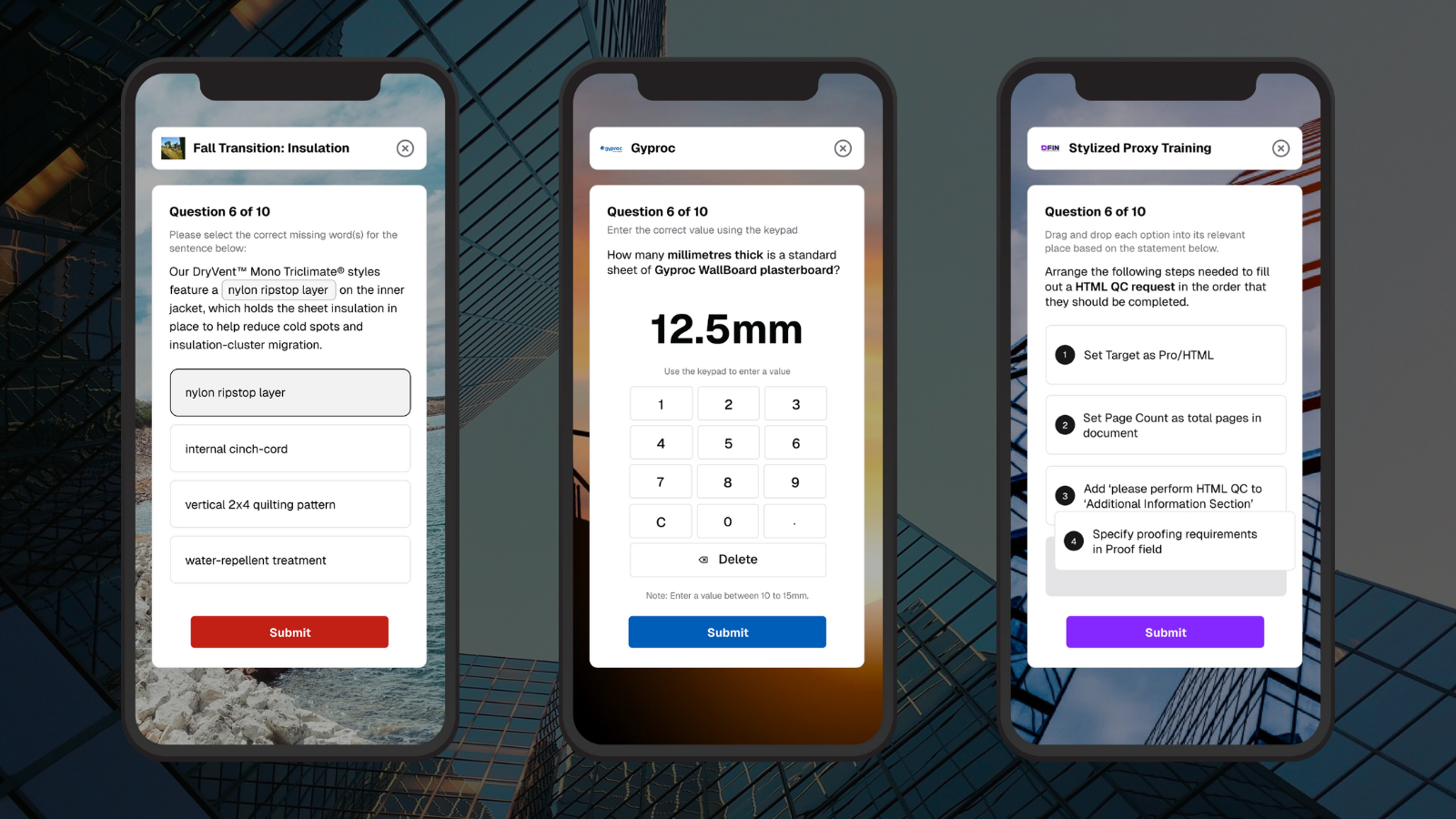
7 Strategies for Improving Learning Retention in The UK (2025)
Such is the rapidly changing pace of the business landscape in the UK, many people within its corporate workforce are having to learn on the job. But with so much new information to absorb from their training and business development programmes, it is only natural that they might forget some of the things they are taught. For this reason, companies should embrace strategies that help their employees perform their roles as effectively as they can by improving their capacity for learning retention. If you are looking to enhance this area of your business, this post will outline some of the most successful strategies.
What Is Learning Retention?
In the context of UK businesses, learning retention relates to the ability of an employee to store and recall the key pieces of knowledge they need to make fruitful contributions to the organisation. This often manifests itself in scenarios like operating database systems at the optimal level or determining the best course of action in specific situations. Several factors—including mental, physical, social, and personal—can affect a person’s ability to do this. So, business management and leaders need to ask themselves how best to deliver a workplace learning programme that will better enable their employees to meet the organisation’s strategic and operational goals. Outlined below is a selection of strategies they should adopt.
Strategies UK businesses can use to Improve Learning Retention
If implemented properly, these seven strategies can significantly enhance the ability of your UK-based employees to remember the most crucial aspects of what they have been taught.
1. Spaced learning
Spaced learning can be a very efficacious strategy for improving your employee’s learning retention abilities. It is based on the idea that people are most likely to retain more of what they have been taught if it is repeated to them at regular intervals. Essentially, the strategy helps people achieve a greater depth of comprehension quickly and minimises the amount of knowledge they do not retain during one-time tutorial sessions. In corporate training, the best way to implement spaced learning is to break down your employees' training programmes into numerous modules or sessions. You should also make sure they have short durations and are spaced out over a period of a few weeks, with the most critical elements being covered on a regular basis.
2. Blended learning
By combining traditional face-to-face learning techniques with eLearning, blended learning is a model that taps into the benefits of two established approaches. The great thing about blended learning is that your employees can access information both offline and online. Therefore, it doesn’t matter if they are auditory, visual or kinesthetic learners. It appeals equally to those who prefer to be taught via computer-based training and others who learn best in a traditional classroom environment.
3. Microlearning
For employees with heavy workloads, microlearning is an excellent strategy to adopt when it comes to staff training. By breaking down the content you want them to learn into very short modules of 5 – 10 minutes, you make it very easy for them to retain the most crucial information. This tactic is designed to ensure employees are not overwhelmed with too much information by having to sit through long webinars or courses in one single session. As it can be delivered both online or in person, it can be a very worthwhile way of enhancing your employee’s levels of learning retention. Here are some very good microlearning platforms you can use.
4. Deliver content that is engaging and interactive
Arguably, the key to improving rates of learning retention in the UK, or anywhere around the world for that matter, is to deliver training content that really engages your employees. Ultimately, the more interactive the content, the better. Therefore, use eye-catching visuals, surveys, quizzes, and Q&As to command their attention. You should also try creating characters and narrative situations that employees can identify with and illustrate complex processes through animation videos. The key to producing engaging, interactive content is to inject humour, personality, and honesty into the training programme. It is imperative that you also make it relevant to the employees' jobs.
5. Utilise video learning
In the digital age, video learning is something an increasing number of your workforce, especially those under the age of 40, can relate to. For this reason, it is worth delivering knowledge and content through this medium. According to this report, visual representations often help learners understand what is being taught to them more quickly. This can also result in them storing what they’ve been taught in their memory for longer.
6. Apply relatable examples
Your employees will find it much more difficult to memorise what you want them to learn if it appears irrelevant or unrelated to their field of expertise. As a result, you should take steps to create learning modules that apply directly to their roles and daily work practices. This will give them a firm grasp of how they can benefit from the training they are receiving. Simulations can be a terrific way to highlight to your staff members how the information they are being taught applies to the work they do. It does this primarily by helping them to understand what consequences and potential benefits or drawbacks may arise from certain courses of action in a learning environment that is risk-free.
7. Use a mix of different learning formats
As your workforce comprises people of varying backgrounds and personalities, it is only natural that they respond better to different learning styles. For example, while one individual might learn more from job shadowing, another might prefer video training. Therefore, to maximise the effectiveness of their training programmes, companies should embrace multiple learning formats. By doing this, you will draw upon different methods of training to develop customised learning strategies for your employees that tap into different senses. The result of this is that you should increase the level of engagement they have in the training programmes and their ability to retain knowledge from it. Ultimately, this should also result in your business achieving a higher ROI on its professional development initiatives.
Final Thought
At the end of the day, improving rates of corporate learning retention in the UK is something many British-based businesses are actively looking to do. While there is no one-size-fits-all solution, all the strategies outlined above can help you enhance your employees' skills and knowledge base. The key is to find the right solutions for your organisation and to use an employee training tracker to keep yourself up to date.
FAQs
Here are some answers to frequently asked questions people ask about Learning Retention in the UK.
1. What is learning retention and why does it matter in corporate training?
Learning retention refers to how much information an employee remembers and can apply after a training session. In the UK, where businesses spend billions annually on training, low retention means poor ROI. Without retention, training is essentially wasted time and money.
2. How much corporate training is typically forgotten?
Studies suggest that employees forget up to 60–70% of training content within a week, and up to 90% within a month if it's not reinforced — a phenomenon known as the Ebbinghaus Forgetting Curve. This is a significant issue for UK businesses aiming for performance improvement and compliance.
3. What causes poor knowledge retention in workplace training?
Common causes include:
-
Overloading staff with too much information in one session
-
Lack of practical application opportunities
-
No follow-up or reinforcement
-
Passive formats like slide decks or long webinars
These are still widespread in UK L&D strategies, especially in large, remote or multi-site workforces.
4. How can UK companies improve learning retention among employees?
Best practices include:
-
Spaced repetition: Revisiting content over time to solidify memory
-
Microlearning: Delivering content in short, digestible chunks
-
Gamified learning: Increasing engagement and motivation
-
Regular assessments: Reinforcing learning and highlighting gaps
Wranx combines all of these to help UK businesses improve training ROI.
5. Is poor retention a compliance risk?
Yes — especially in regulated industries like healthcare, finance, and utilities, where staff need to retain critical policies and procedures. Poor retention can lead to costly mistakes, failed audits, or legal penalties under UK regulations such as the FCA, Ofgem, or CQC.
6. What are the benefits of high learning retention for UK organisations?
Better retention leads to:
-
Faster onboarding
-
Fewer errors and rework
-
Improved employee confidence and performance
-
Lower retraining costs
-
Stronger compliance
All of which contribute to business resilience and efficiency.
7. How do UK-based companies measure retention effectively?
Leading L&D teams use analytics dashboards (like those in Wranx) to:
-
Track quiz performance over time
-
Spot knowledge gaps by topic or role
-
Compare cohorts across departments or locations
This data-driven approach supports evidence-based training decisions.
8. Does learning retention vary by industry in the UK?
Yes. Industries with high turnover or frontline workers (e.g. retail, call centres, hospitality) often struggle more with retention due to time constraints and dispersed teams. These sectors benefit most from mobile-first, microlearning platforms.
9. How often should training be reinforced to maximise retention?
Reinforcement should happen within 24–48 hours of initial learning, then repeatedly over days and weeks. Platforms like Wranx automate this using daily quizzes and spaced repetition, turning training into a lasting habit.
10. How does Wranx help UK organisations improve knowledge retention?
Wranx uses:
-
Spaced repetition algorithms to fight the forgetting curve
-
2-minute-a-day mobile learning that fits into busy workdays
-
Gamified assessments to keep employees engaged
-
Real-time dashboards to measure impact


